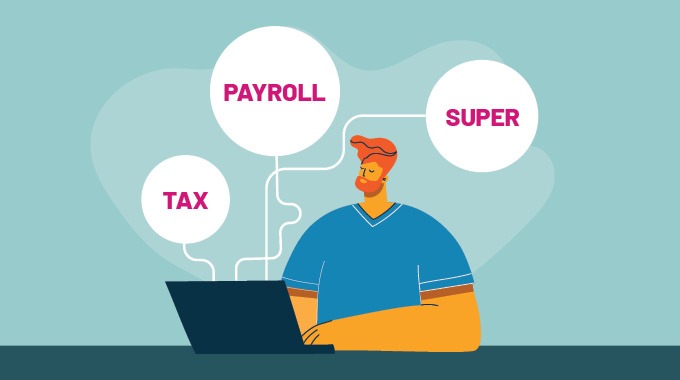
Have you heard the next phase of Single Touch Payroll (STP) is being rolled out in January 2022? Before you put it in the too-hard basket, keep reading. Because we’re here to help make sense of the upcoming changes and how to be compliant.
What is Single Touch Payroll?
There’s a good chance you already know what Single Touch Payroll is. But in a nutshell, one touch payroll changed the way businesses report employee tax and super details to the ATO. Legislated in 2016 and implemented in 2018, it was designed to make it easier to meet your reporting requirements.
Rather than report payroll once a year to the ATO, it’s now done digitally after each payday.
What is Single Touch Payroll Phase 2?
Known in cool circles (like, ahem, Wageloch HQ) as STP 2, the next phase of Single Touch Payroll introduces several key changes. Essentially, the way employers report earnings to the ATO will become much more granular — and you’ll no longer have to report manually to other government agencies.
Some things will now need to be reported separately or in more detail, such as paid leave, salary sacrifice, bonuses and commissions, reason for termination, country codes , overtime, child support deductions, and directors’ fees.
There are a few other changes designed to streamline reporting, such as:
- You won’t have to send employees’ Tax File Number declarations to the ATO. They’ll simply give it to you to keep with their records.
- You no longer have to give your employees Lump Sum E letters.
- You can let the ATO know you’re using a concessional reporting option by reporting income types.
- You can voluntarily report child support deductions, instead of sending a separate notice to the Child Support Registrar.
- If you change software or payroll IDs, you can notify the ATO in your STP report, to avoid employees receiving duplicate income statements in myGov.
- The ATO will share your payroll information in near real-time with Services Australia, so you and your staff won’t have to.
At tax time, employees will also have a much better experience. They’ll be able to see the different income types they received during the financial year — as well as check if their income-tested payments were calculated correctly and paid at the right time. The ATO will also let them know if they’ve given you the wrong information and are at risk of receiving a tax bill.
When will STP 2 come into effect?
You’ll need to transition to STP Phase 2 by 1 January 2022. However, some payroll providers will be granted more time to update their systems, and you can apply for a further extension from 1 October 2021.
For the first year of reporting, employers won’t be penalised if they make a genuine mistake.
Bear in mind many things will stay the same, such as your tax and super obligations and the way you lodge your STP report.
How can you comply?
First, make sure your payroll provider will be set up for Single Touch Payroll Phase 2 by the scheduled start date (or has let you know if it’s seeking a deferral). As soon as it’s ready, you should start Phase 2 reporting.
You’ll be happy to hear Wageloch is already STP 2 ready, as we built it to give a granular view of pay categories. You may simply need to update your payroll mappings to align with the new categories in your payroll solution. As always, we’re here to help if you get stuck.
Then when 1 January rolls around, you can be confident you’re sending compliant reports to the ATO each payday — because Wageloch’s integration will handle it for you if your payroll provider is STP 2 ready.
For more, see the full reporting guidelines.
Want to know more?
Payroll rules and regulations can be a minefield. So if you’d like to see how Single Touch Payroll Phase 2 might affect you, just ask. And if you’d like to switch to Wageloch before the changes arrive, you can book a demo with our friendly team today.
Disclaimer:
The information in this article is intended as a guide only, providing an overview of general information available. It’s not intended to be an exhaustive source of information and should not be seen to constitute legal or tax advice. You should, where necessary, seek a second professional opinion for any legal or tax issues raised in your business affairs.


